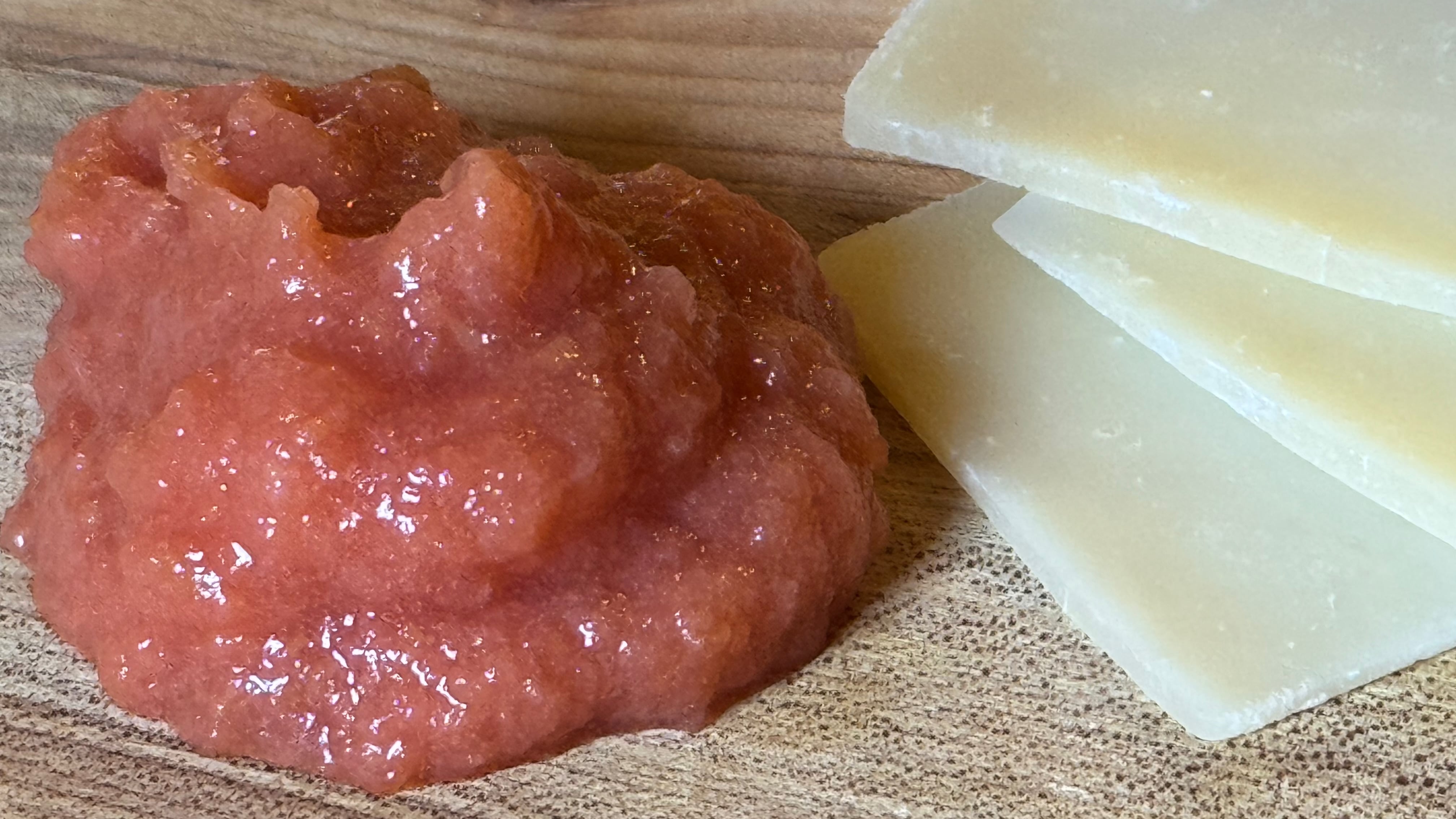Jim Dixon wrote about food for WW for more than 20 years, but these days most of his time is spent at his olive oil-focused specialty food business Wellspent Market. Jim’s always loved to eat, and he encourages his customers to cook by sending them recipes every week through his newsletter. We’re happy to have him back creating some special dishes just for WW readers.
Start by planting a quince tree. It might be the only way you’ll find the quince you need to make marmelada. The yellow fruit that look like oversized lumpy pears rarely make it to your supermarket’s produce section, and you’d even be hard pressed to find them at the farmers market.
While they smell great, raw quince is hard, astringent and pretty much inedible. But cook quince and magic happens. Heat denatures the fruit’s anthocyanins, and the pale white flesh turns a rosy pink. A bit of sugar or honey brings out flavors that hint of apple or pear, but with an elusive floral taste that some compare to guava.
Quince paste, membrillo in Spanish, introduced me to the elusive fruit. I nibbled at deep red, slightly gelatinous slices laid on a cheese board with manchego and realized how well the creamy, salty and savory cheese tasted with the sweet and tangy membrillo. And since cheese is my favorite food group, I planted a quince in my backyard thinking I’d soon be making my own.
But over the years I learned that to get quince paste to set required as much sugar as fruit. While I’m not opposed to the flavor enhancing properties of sugar, the requisite amount covered up the flavor of the quince and the result was more like candy. The low sugar variations I tried tasted great, but wouldn’t set up like the traditional membrillo. When I gave up on firm, sliceable quince paste and looked for another approach for using my homegrown fruit to make something I could eat with cheese, I found marmelada.
Marmelada comes from the Portuguese word for quince, marmelo. If you’re thinking it sounds a lot like what we call those English-style citrus jams—well, the first marmalade was not, in fact, made from oranges. It was quince marmelada. While we know that in 1524 Henry VIII received a gift box of something called marmaladoo and it was most likely quince jam, the rest of the story gets lost in the scramble of notoriously unreliable food history. Source documents do tell us that humans have been eating quince for thousands of years, and even the ancient Romans noted that some honey was necessary to make the fruit more palatable. But sugar was an expensive luxury until colonization and chattel slavery on sugar plantations made fruit jams into cheap fuel for the workers of the Industrial Revolution.
Fascinating history aside, lightly sweetened quince marmelada is perfect with cheese and provokes great after-dinner conversation. It’s fairly easy to make, especially compared to most other preserves. You just need to find the quince, and you might just do that at Portland’s Quince Festival on Nov. 2 at Bauman’s on Oak.
Recipe
2 pounds quince (3–4 individual fruits)
1 lemon, zest and juice
¾ cup sugar
¾ cup rosé or white wine (or water)
While some quince recipes call for peeling and coring the fruit, they’re so hard it’s much easier to leave them intact. Cut them into quarters from top to bottom, and remove any of the disintegrating blossoms from the end opposite the stem.
I like to use a pot wide enough to place the cut fruit in a single layer, but that’s not critical. Mix the lemon zest, juice, wine and sugar together, then arrange the quartered quince on top. Bring to a boil, reduce the heat to a gentle simmer, cover, and cook until the fruit turns rosy pink, about 2 hours.
Let cool and use a paring knife to remove the cores but leave the fruit unpeeled. Transfer the cored quince to a food processor and add the cooking liquid after picking out any seeds. Process to a smooth purée. Alternatively, put the cooked quince and cooking liquid in a large bowl and use a potato masher to blend to an applesaucelike texture. The marmelada will keep for a couple of weeks in the refrigerator, and it freezes well.

